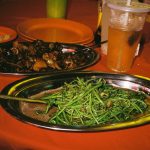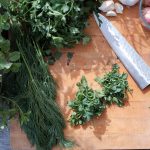Mastering the Art of Cooking with Herbs: Transform Your Dishes Instantly
Fresh herbs can transform even the simplest dish into something extraordinary. From the zest of basil to the earthy notes of rosemary, herbs have long been the unsung heroes of culinary creations. Incorporating fresh herbs into cooking is a surefire way to elevate flavor profiles and add a touch of sophistication to any meal. By learning how to use herbs effectively, even an ordinary kitchen can become a gourmet playground.
Exploring different types of herbs opens up a world of possibilities in the kitchen. Each herb has its own distinct characteristics and when combined, they can create layers of flavor that tantalize the taste buds. Culinary enthusiasts will discover that mastering herbs is not just about adding taste; it is about enhancing aroma, texture, and even the visual appeal of a dish.
The journey to mastering the art of cooking with herbs begins with understanding their unique properties and how they complement other ingredients. Whether growing a kitchen herb garden or purchasing them fresh from the market, selecting the right herbs can make all the difference. Learning which herbs pair well with specific foods—like adding thyme to enhance roasted vegetables or using cilantro in salsa—can fundamentally change the way one experiences cooking and eating.
Essentials of a Herb-Infused Kitchen
Creating a kitchen infused with fresh, aromatic herbs is easier with a well-planned approach. This section outlines how to stock and maintain herbs, ensuring they enhance every culinary creation.
Stocking Your Kitchen With Herbs
One essential aspect of a herb-infused kitchen is having a variety of herbs readily available. Both fresh and dried herbs serve different purposes and provide diverse flavors. Fresh herbs are often preferred for garnishing and adding vibrant tastes, while dried herbs offer concentrated flavors perfect for simmering dishes.
He considers incorporating popular herbs like basil, thyme, rosemary, and parsley. Growing a small herb garden on a window sill or using a vertical planter can be a practical solution. This approach not only ensures availability but can also be cost-effective.
For those who prefer dried herbs, locating them in sealed containers is crucial. Airtight glasses or tins help in maintaining their aroma and effectiveness over time. Strategically placing them close to the cooking area will make it easier to spice up any dish at a moment’s notice.
Selection and Storage of Herbs
Choosing the right herbs involves understanding the different varieties and their specific uses. They should seek vibrant colors and fresh aromas, indicating quality. The location of purchase matters; farmers’ markets or local grocers often provide fresher produce than larger supermarkets.
Proper storage plays a vital role in prolonging the shelf life of herbs. Fresh herbs benefit from being wrapped in a damp paper towel and stored in plastic bags in the refrigerator. Alternatively, herbs can be placed in a jar with water, much like a bouquet, for easy access and extended freshness.
Dried herbs should be stored in a cool, dark place, away from direct sunlight and heat sources, which can degrade their quality. Periodically reviewing the freshness and potency ensures that only the best ingredients make it into the kitchen’s creations.
Understanding Herbs
Herbs are an essential component in cooking, offering a variety of flavors and aromas that can enhance the taste of any dish. By exploring different flavor profiles and complementary pairings, one can effectively incorporate herbs into everyday cooking.
Flavor Profiles of Popular Herbs
Herbs such as basil, thyme, and cilantro offer distinct taste profiles that can transform a meal’s flavor. Basil is known for its sweet yet peppery notes, making it ideal for Italian dishes like pesto and caprese salad. Thyme, with its subtle earthiness, complements roasted meats and vegetables well, adding depth without overpowering other ingredients. Cilantro is often preferred in Asian and Latin American cuisines due to its refreshing citrus-like taste.
Other herbs like rosemary and oregano offer a robust aroma that works well with grilled meats and tomato-based sauces. Rosemary imparts a pine-like scent, while oregano provides a slightly bitter touch that enhances Mediterranean dishes. Each herb’s unique profile contributes to creating layers of flavor in various cuisines.



